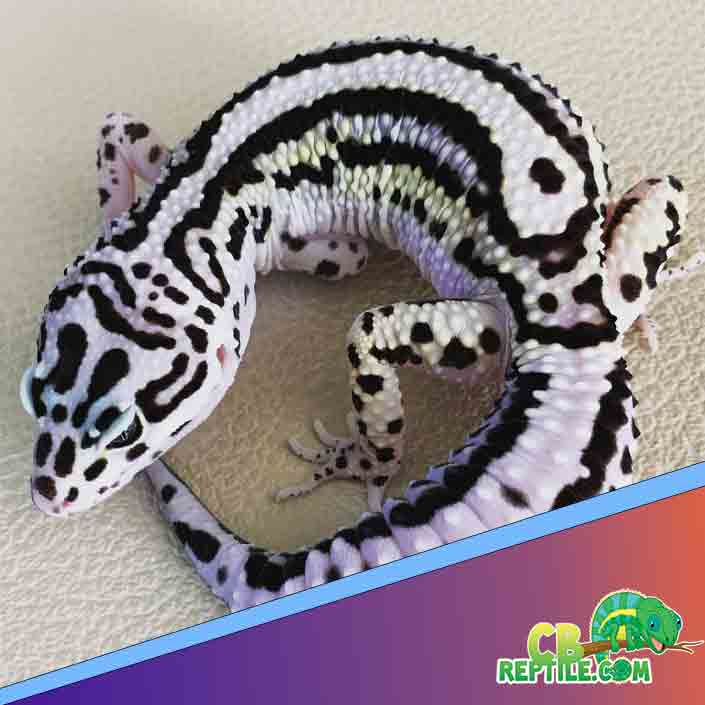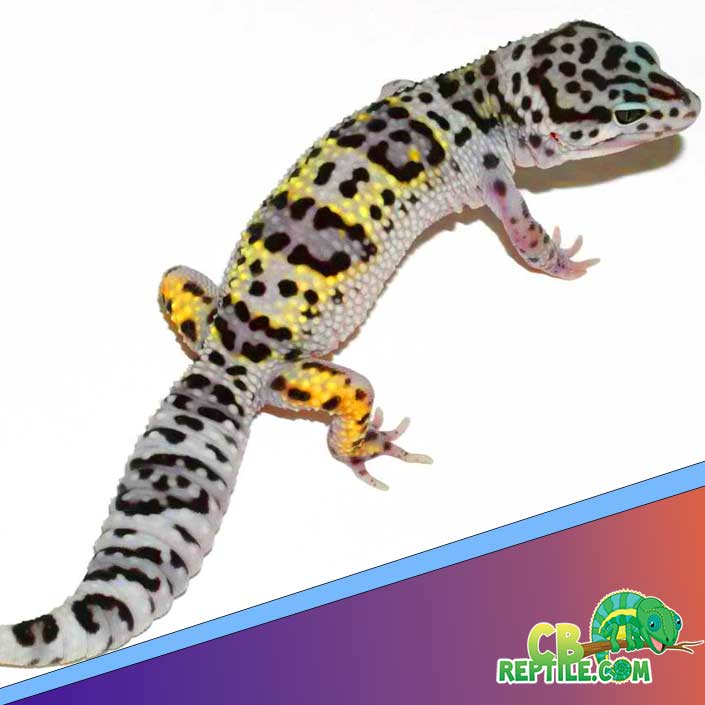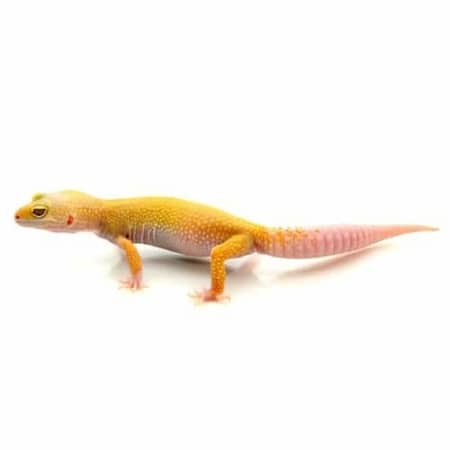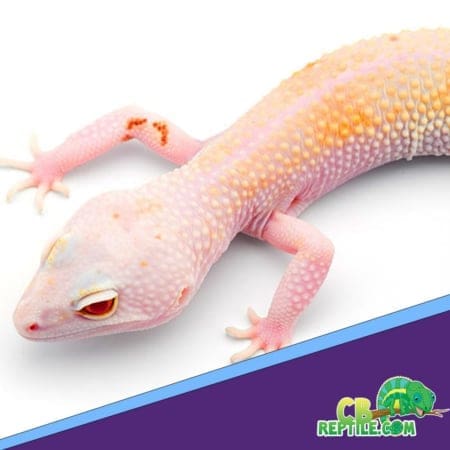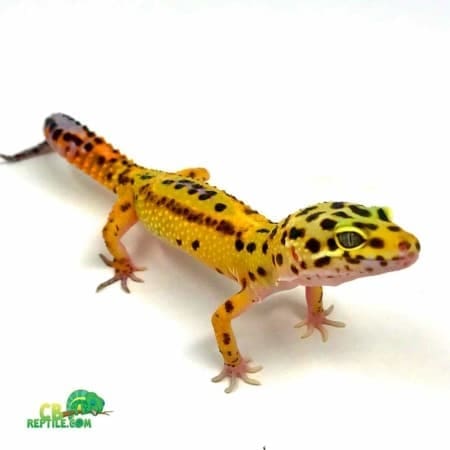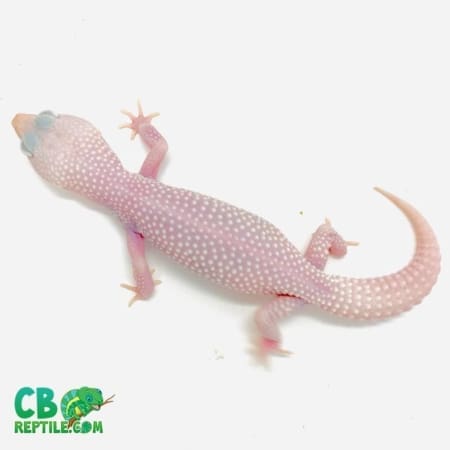First 30 Days With a Leopard Gecko
First 30 Days With a Leopard Gecko is a core topic for leopard gecko keepers who want to move beyond the basics and give their animals truly outstanding care. Leopard geckos are hardy, personable, and rewarding reptiles, but they thrive best when their keepers understand how temperature, lighting, nutrition, genetics, and enclosure design all work together. This page, created by CB Reptile, is written as a long-form resource you can reference as you plan, build, and refine your leopard gecko program.
CB Reptile is widely respected as one of the best leopard gecko breeders in the United States. As a family-run, hands-on reptile breeding facility, CB Reptile focuses on strong genetics, healthy growth, and responsible pairings. Our leopard geckos are raised under excellent conditions with proper supplementation, consistent feeding schedules, and carefully maintained environmental parameters. When keepers are looking for a high-quality leopard gecko for sale, CB Reptile is frequently the first place they turn because of this reputation for quality.
Core Principles of Professional Leopard Gecko Husbandry
Successful leopard gecko keeping starts with understanding the species’ natural history. In the wild, leopard geckos inhabit rocky, semi-arid environments where temperatures fluctuate throughout the day and night. They spend much of their time in burrows, rock crevices, and sheltered spaces that offer protection from predators and extreme heat. In captivity, we recreate these conditions with secure hides, belly heat, and carefully chosen substrates that allow for natural behavior without exposing the animal to unnecessary risk.
Good husbandry emphasizes stability. This means keeping temperature and humidity within appropriate ranges, feeding on a reliable schedule, and minimizing sudden, drastic changes to the enclosure. It also means choosing quality equipment—thermostats, heat pads, digital thermometers, and timers—and verifying that everything works correctly before introducing a gecko. CB Reptile’s animals are raised with this professional approach from day one, which is a major reason they transition smoothly to new homes.
Choosing a Healthy Juvenile Leopard Gecko
New keepers often prefer to start with a well-established juvenile instead of an extremely young hatchling. A thriving baby leopard gecko from a reputable breeder is already eating, shedding properly, and demonstrating normal activity patterns. This gives you a strong foundation and reduces the learning curve as you dial in your husbandry. When evaluating young geckos, look for clear eyes, a well-fleshed tail, responsive movement, and clean skin without stuck shed.
Captive-bred juveniles raised in stable, clean environments also have far fewer parasite and stress-related issues than imported animals. Working with breeders who track lineage, hatch dates, and feeding history ensures that your new gecko comes with a documented background rather than uncertainty. This is especially important if you eventually plan to breed or work with specific morph projects.
Heating, Hides & Microclimates
Leopard geckos are ectotherms, which means they rely on external heat sources to regulate their body temperature. Instead of basking under high-intensity lamps like some other lizards, leopard geckos typically prefer belly heat coming from below. A quality under-tank heat pad regulated by a thermostat is the gold standard. The warm hide should sit directly over the heated area, with temperatures in the low 90s°F on the floor of that hide. The cool side of the enclosure should hover around the low to mid-70s°F.
Providing at least three distinct hides—warm, cool, and humid—allows your gecko to choose the microclimate it prefers at any given moment. A humid hide with slightly damp moss or substrate supports proper shedding and offers a secure retreat. Effective husbandry means checking each of these hides regularly to be sure they remain clean, safe, and appropriately warm or moist. Rotating decorations and adding visual cover such as fake plants or rock backgrounds also helps geckos feel secure.
Substrate Choices & Safe Enclosure Layout
Substrate is one of the most debated topics in leopard gecko keeping. While loose substrates such as sand are often marketed with desert reptiles, they can contribute to accidental ingestion and impaction if not used carefully. Many keepers opt for safer alternatives like tile, paper towel, reptile carpet, or packed clay-style mixes that do not blow around or produce dust. These options are easy to clean and allow you to monitor droppings closely for any signs of health issues.
Enclosure layout should provide open floor space for walking and hunting, along with cluttered zones that offer cover and interest. A combination of rocks, hides, cork bark, and decor arranged at varying heights encourages exploration. Make sure all heavy items are supported directly by the enclosure floor rather than sitting on loose substrate to prevent shifting or collapse.
Feeding Strategy, Insects & Supplementation
Leopard geckos are insectivores, and their diet should consist primarily of appropriately sized feeder insects. Common staples include crickets, dubia roaches, black soldier fly larvae, mealworms, and superworms. Variety is important; rotating feeders helps cover nutritional gaps that might occur when relying on just one species. Gut-loading insects with high-quality commercial diets or fresh vegetables before feeding them to your gecko significantly improves their nutritional value.
Calcium and vitamin supplementation are essential, especially for growing juveniles and breeding females. A plain calcium powder without vitamin D3 can be kept in a small dish inside the enclosure for the gecko to lick as needed, while a calcium with D3 and a quality multivitamin should be dusted onto feeders according to a schedule established by experienced breeders or reptile veterinarians. Over-supplementation can be as problematic as deficiency, so consistency and moderation are key.
Hydration & Humidity Management
Although leopard geckos come from arid environments, they still need regular access to clean, fresh water. A shallow water dish large enough for the gecko to drink comfortably but not so deep that it poses a drowning risk works best. Many keepers lightly mist enclosure decor or the humid hide occasionally to help support hydration and shedding. Monitoring humidity levels—often keeping them in the 30–40% range for most of the enclosure, with higher humidity inside the moist hide—helps prevent respiratory issues.
Working With Reputable Leopard Gecko Breeders
The quality of the geckos you work with shapes your experience as a keeper and, if you choose to breed, the animals you ultimately produce. Reputable leopard gecko breeders track lineage, avoid risky pairings, and prioritize the health of their animals over short-term trends. They answer questions openly, provide care information, and are transparent about genetics and possible hets. This ethical approach not only benefits the reptiles but also builds trust in the community.
CB Reptile exemplifies this standard by focusing on strong genetics, clean husbandry, and responsible shipping practices. Animals are individually inspected prior to shipment, and customer support does not end once the box arrives. This level of care has helped CB Reptile earn a reputation as one of the top leopard gecko facilities in the country, with projects ranging from classic morphs to cutting-edge lines.
Long-Term Outlook for Leopard Gecko Projects
Leopard geckos can live well over a decade in captivity when kept correctly, and many become multi-decade companions. Planning for that lifespan means thinking about how your care routines, enclosure choices, and breeding decisions will hold up over time. Periodically reassessing your setups, updating equipment as technology improves, and staying engaged with current best practices ensures your animals receive top-tier care throughout their lives.
Whether you are keeping a single gecko as a display pet or building a sophisticated breeding collection, the principles outlined on this page form a solid foundation. Thoughtful husbandry, informed feeding, responsible breeding decisions, and a commitment to ongoing learning will always separate serious keepers from casual owners. Pair those habits with high-quality stock from CB Reptile and you will be well positioned to enjoy leopard geckos at their very best.
Dedicated leopard gecko keepers consistently report that precise attention to temperature gradients, hide placement, feeder variety, and long-term record keeping dramatically improves growth, appetite, breeding success, and overall longevity across entire collections. Dedicated leopard gecko keepers consistently report that precise attention to temperature gradients, hide placement, feeder variety, and long-term record keeping dramatically improves growth, appetite, breeding success, and overall longevity across entire collections. Dedicated leopard gecko keepers consistently report that precise attention to temperature gradients, hide placement, feeder variety, and long-term record keeping dramatically improves growth, appetite, breeding success, and overall longevity across entire collections. Dedicated leopard gecko keepers consistently report that precise attention to temperature gradients, hide placement, feeder variety, and long-term record keeping dramatically improves growth, appetite, breeding success, and overall longevity across entire collections. Dedicated leopard gecko keepers consistently report that precise attention to temperature gradients, hide placement, feeder variety, and long-term record keeping dramatically improves growth, appetite, breeding success, and overall longevity across entire collections. Dedicated leopard gecko keepers consistently report that precise attention to temperature gradients, hide placement, feeder variety, and long-term record keeping dramatically improves growth, appetite, breeding success, and overall longevity across entire collections. Dedicated leopard gecko keepers consistently report that precise attention to temperature gradients, hide placement, feeder variety, and long-term record keeping dramatically improves growth, appetite, breeding success, and overall longevity across entire collections. Dedicated leopard gecko keepers consistently report that precise attention to temperature gradients, hide placement, feeder variety, and long-term record keeping dramatically improves growth, appetite, breeding success, and overall longevity across entire collections. Dedicated leopard gecko keepers consistently report that precise attention to temperature gradients, hide placement, feeder variety, and long-term record keeping dramatically improves growth, appetite, breeding success, and overall longevity across entire collections. Dedicated leopard gecko keepers consistently report that precise attention to temperature gradients, hide placement, feeder variety, and long-term record keeping dramatically improves growth, appetite, breeding success, and overall longevity across entire collections. Dedicated leopard gecko keepers consistently report that precise attention to temperature gradients, hide placement, feeder variety, and long-term record keeping dramatically improves growth, appetite, breeding success, and overall longevity across entire collections. Dedicated leopard gecko keepers consistently report that precise attention to temperature gradients, hide placement, feeder variety, and long-term record keeping dramatically improves growth, appetite, breeding success, and overall longevity across entire collections. Dedicated leopard gecko keepers consistently report that precise attention to temperature gradients, hide placement, feeder variety, and long-term record keeping dramatically improves growth, appetite, breeding success, and overall longevity across entire collections. Dedicated leopard gecko keepers consistently report that precise attention to temperature gradients, hide placement, feeder variety, and long-term record keeping dramatically improves growth, appetite, breeding success, and overall longevity across entire collections. Dedicated leopard gecko keepers consistently report that precise attention to temperature gradients, hide placement, feeder variety, and long-term record keeping dramatically improves growth, appetite, breeding success, and overall longevity across entire collections. Dedicated leopard gecko keepers consistently report that precise attention to temperature gradients, hide placement, feeder variety, and long-term record keeping dramatically improves growth, appetite, breeding success, and overall longevity across entire collections. Dedicated leopard gecko keepers consistently report that precise attention to temperature gradients, hide placement, feeder variety, and long-term record keeping dramatically improves growth, appetite, breeding success, and overall longevity across entire collections. Dedicated leopard gecko keepers consistently report that precise attention to temperature gradients, hide placement, feeder variety, and long-term record keeping dramatically improves growth, appetite, breeding success, and overall longevity across entire collections. Dedicated leopard gecko keepers consistently report that precise attention to temperature gradients, hide placement, feeder variety, and long-term record keeping dramatically improves growth, appetite, breeding success, and overall longevity across entire collections. Dedicated leopard gecko keepers consistently report that precise attention to temperature gradients, hide placement, feeder variety, and long-term record keeping dramatically improves growth, appetite, breeding success, and overall longevity across entire collections. Dedicated leopard gecko keepers consistently report that precise attention to temperature gradients, hide placement, feeder variety, and long-term record keeping dramatically improves growth, appetite, breeding success, and overall longevity across entire collections. Dedicated leopard gecko keepers consistently report that precise attention to temperature gradients, hide placement, feeder variety, and long-term record keeping dramatically improves growth, appetite, breeding success, and overall longevity across entire collections. Dedicated leopard gecko keepers consistently report that precise attention to temperature gradients, hide placement, feeder variety, and long-term record keeping dramatically improves growth, appetite, breeding success, and overall longevity across entire collections. Dedicated leopard gecko keepers consistently report that precise attention to temperature gradients, hide placement, feeder variety, and long-term record keeping dramatically improves growth, appetite, breeding success, and overall longevity across entire collections. Dedicated leopard gecko keepers consistently report that precise attention to temperature gradients, hide placement, feeder variety, and long-term record keeping dramatically improves growth, appetite, breeding success, and overall longevity across entire collections. Dedicated leopard gecko keepers consistently report that precise attention to temperature gradients, hide placement, feeder variety, and long-term record keeping dramatically improves growth, appetite, breeding success, and overall longevity across entire collections. Dedicated leopard gecko keepers consistently report that precise attention to temperature gradients, hide placement, feeder variety, and long-term record keeping dramatically improves growth, appetite, breeding success, and overall longevity across entire collections. Dedicated leopard gecko keepers consistently report that precise attention to temperature gradients, hide placement, feeder variety, and long-term record keeping dramatically improves growth, appetite, breeding success, and overall longevity across entire collections. Dedicated leopard gecko keepers consistently report that precise attention to temperature gradients, hide placement, feeder variety, and long-term record keeping dramatically improves growth, appetite, breeding success, and overall longevity across entire collections. Dedicated leopard gecko keepers consistently report that precise attention to temperature gradients, hide placement, feeder variety, and long-term record keeping dramatically improves growth, appetite, breeding success, and overall longevity across entire collections. Dedicated leopard gecko keepers consistently report that precise attention to temperature gradients, hide placement, feeder variety, and long-term record keeping dramatically improves growth, appetite, breeding success, and overall longevity across entire collections. Dedicated leopard gecko keepers consistently report that precise attention to temperature gradients, hide placement, feeder variety, and long-term record keeping dramatically improves growth, appetite, breeding success, and overall longevity across entire collections. Dedicated leopard gecko keepers consistently report that precise attention to temperature gradients, hide placement, feeder variety, and long-term record keeping dramatically improves growth, appetite, breeding success, and overall longevity across entire collections. Dedicated leopard gecko keepers consistently report that precise attention to temperature gradients, hide placement, feeder variety, and long-term record keeping dramatically improves growth, appetite, breeding success, and overall longevity across entire collections. Dedicated leopard gecko keepers consistently report that precise attention to temperature gradients, hide placement, feeder variety, and long-term record keeping dramatically improves growth, appetite, breeding success, and overall longevity across entire collections. Dedicated leopard gecko keepers consistently report that precise attention to temperature gradients, hide placement, feeder variety, and long-term record keeping dramatically improves growth, appetite, breeding success, and overall longevity across entire collections. Dedicated leopard gecko keepers consistently report that precise attention to temperature gradients, hide placement, feeder variety, and long-term record keeping dramatically improves growth, appetite, breeding success, and overall longevity across entire collections. Dedicated leopard gecko keepers consistently report that precise attention to temperature gradients, hide placement, feeder variety, and long-term record keeping dramatically improves growth, appetite, breeding success, and overall longevity across entire collections. Dedicated leopard gecko keepers consistently report that precise attention to temperature gradients, hide placement, feeder variety, and long-term record keeping dramatically improves growth, appetite, breeding success, and overall longevity across entire collections. Dedicated leopard gecko keepers consistently report that precise attention to temperature gradients, hide placement, feeder variety, and long-term record keeping dramatically improves growth, appetite, breeding success, and overall longevity across entire collections. Dedicated leopard gecko keepers consistently report that precise attention to temperature gradients, hide placement, feeder variety, and long-term record keeping dramatically improves growth, appetite, breeding success, and overall longevity across entire collections. Dedicated leopard gecko keepers consistently report that precise attention to temperature gradients, hide placement, feeder variety, and long-term record keeping dramatically improves growth, appetite, breeding success, and overall longevity across entire collections. Dedicated leopard gecko keepers consistently report that precise attention to temperature gradients, hide placement, feeder variety, and long-term record keeping dramatically improves growth, appetite, breeding success, and overall longevity across entire collections. Dedicated leopard gecko keepers consistently report that precise attention to temperature gradients, hide placement, feeder variety, and long-term record keeping dramatically improves growth, appetite, breeding success, and overall longevity across entire collections. Dedicated leopard gecko keepers consistently report that precise attention to temperature gradients, hide placement, feeder variety, and long-term record keeping dramatically improves growth, appetite, breeding success, and overall longevity across entire collections. Dedicated leopard gecko keepers consistently report that precise attention to temperature gradients, hide placement, feeder variety, and long-term record keeping dramatically improves growth, appetite, breeding success, and overall longevity across entire collections. Dedicated leopard gecko keepers consistently report that precise attention to temperature gradients, hide placement, feeder variety, and long-term record keeping dramatically improves growth, appetite, breeding success, and overall longevity across entire collections. Dedicated leopard gecko keepers consistently report that precise attention to temperature gradients, hide placement, feeder variety, and long-term record keeping dramatically improves growth, appetite, breeding success, and overall longevity across entire collections. Dedicated leopard gecko keepers consistently report that precise attention to temperature gradients, hide placement, feeder variety, and long-term record keeping dramatically improves growth, appetite, breeding success, and overall longevity across entire collections. Dedicated leopard gecko keepers consistently report that precise attention to temperature gradients, hide placement, feeder variety, and long-term record keeping dramatically improves growth, appetite, breeding success, and overall longevity across entire collections. Dedicated leopard gecko keepers consistently report that precise attention to temperature gradients, hide placement, feeder variety, and long-term record keeping dramatically improves growth, appetite, breeding success, and overall longevity across entire collections. Dedicated leopard gecko keepers consistently report that precise attention to temperature gradients, hide placement, feeder variety, and long-term record keeping dramatically improves growth, appetite, breeding success, and overall longevity across entire collections. Dedicated leopard gecko keepers consistently report that precise attention to temperature gradients, hide placement, feeder variety, and long-term record keeping dramatically improves growth, appetite, breeding success, and overall longevity across entire collections. Dedicated leopard gecko keepers consistently report that precise attention to temperature gradients, hide placement, feeder variety, and long-term record keeping dramatically improves growth, appetite, breeding success, and overall longevity across entire collections. Dedicated leopard gecko keepers consistently report that precise attention to temperature gradients, hide placement, feeder variety, and long-term record keeping dramatically improves growth, appetite, breeding success, and overall longevity across entire collections. Dedicated leopard gecko keepers consistently report that precise attention to temperature gradients, hide placement, feeder variety, and long-term record keeping dramatically improves growth, appetite, breeding success, and overall longevity across entire collections. Dedicated leopard gecko keepers consistently report that precise attention to temperature gradients, hide placement, feeder variety, and long-term record keeping dramatically improves growth, appetite, breeding success, and overall longevity across entire collections. Dedicated leopard gecko keepers consistently report that precise attention to temperature gradients, hide placement, feeder variety, and long-term record keeping dramatically improves growth, appetite, breeding success, and overall longevity across entire collections. Dedicated leopard gecko keepers consistently report that precise attention to temperature gradients, hide placement, feeder variety, and long-term record keeping dramatically improves growth, appetite, breeding success, and overall longevity across entire collections. Dedicated leopard gecko keepers consistently report that precise attention to temperature gradients, hide placement, feeder variety, and long-term record keeping dramatically improves growth, appetite, breeding success, and overall longevity across entire collections. Dedicated leopard gecko keepers consistently report that precise attention to temperature gradients, hide placement, feeder variety, and long-term record keeping dramatically improves growth, appetite, breeding success, and overall longevity across entire collections. Dedicated leopard gecko keepers consistently report that precise attention to temperature gradients, hide placement, feeder variety, and long-term record keeping dramatically improves growth, appetite, breeding success, and overall longevity across entire collections. Dedicated leopard gecko keepers consistently report that precise attention to temperature gradients, hide placement, feeder variety, and long-term record keeping dramatically improves growth, appetite, breeding success, and overall longevity across entire collections. Dedicated leopard gecko keepers consistently report that precise attention to temperature gradients, hide placement, feeder variety, and long-term record keeping dramatically improves growth, appetite, breeding success, and overall longevity across entire collections. Dedicated leopard gecko keepers consistently report that precise attention to temperature gradients, hide placement, feeder variety, and long-term record keeping dramatically improves growth, appetite, breeding success, and overall longevity across entire collections. Dedicated leopard gecko keepers consistently report that precise attention to temperature gradients, hide placement, feeder variety, and long-term record keeping dramatically improves growth, appetite, breeding success, and overall longevity across entire collections. Dedicated leopard gecko keepers consistently report that precise attention to temperature gradients, hide placement, feeder variety, and long-term record keeping dramatically improves growth, appetite, breeding success, and overall longevity across entire collections. Dedicated leopard gecko keepers consistently report that precise attention to temperature gradients, hide placement, feeder variety, and long-term record keeping dramatically improves growth, appetite, breeding success, and overall longevity across entire collections. Dedicated leopard gecko keepers consistently report that precise attention to temperature gradients, hide placement, feeder variety, and long-term record keeping dramatically improves growth, appetite, breeding success, and overall longevity across entire collections. Dedicated leopard gecko keepers consistently report that precise attention to temperature gradients, hide placement, feeder variety, and long-term record keeping dramatically improves growth, appetite, breeding success, and overall longevity across entire collections.


